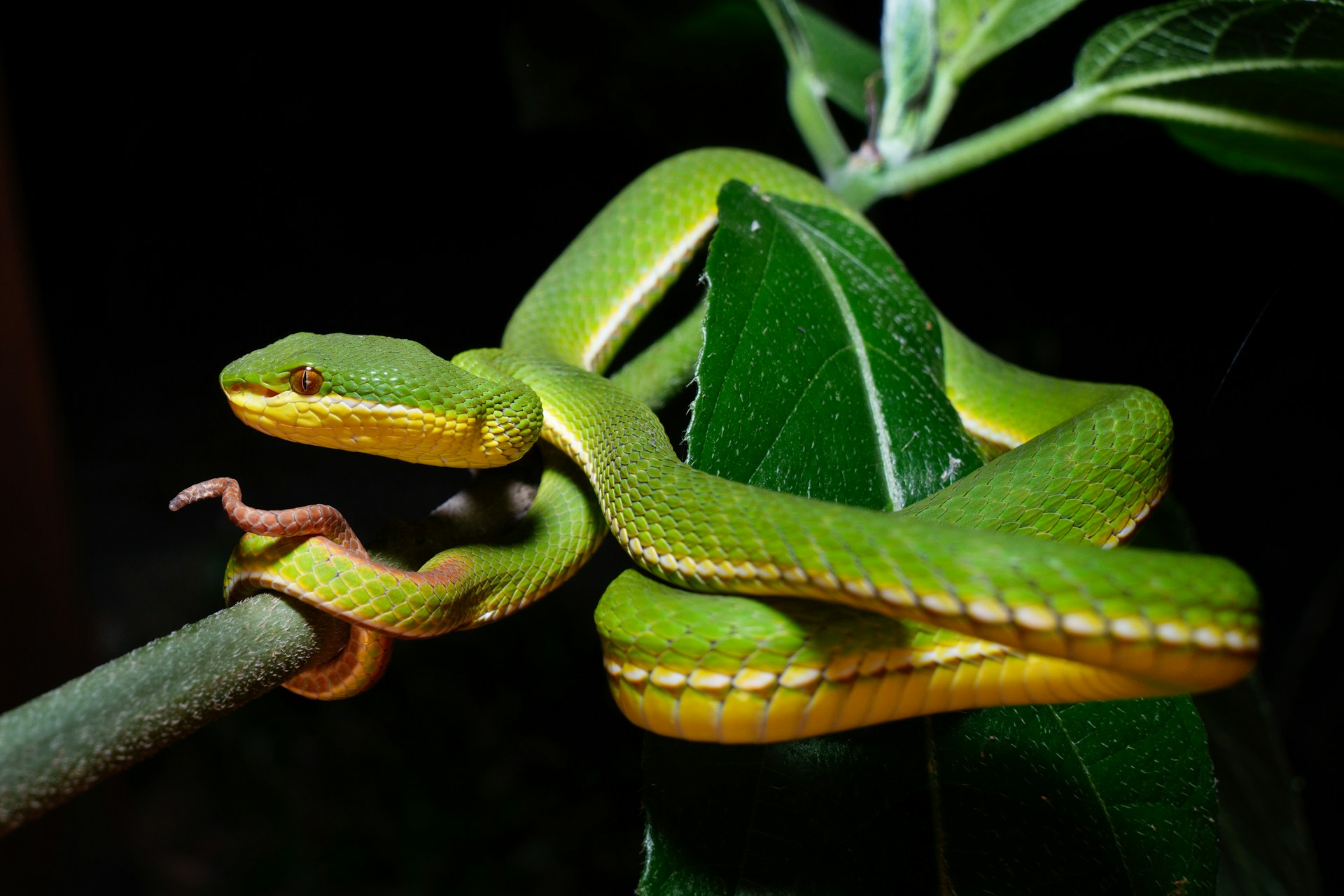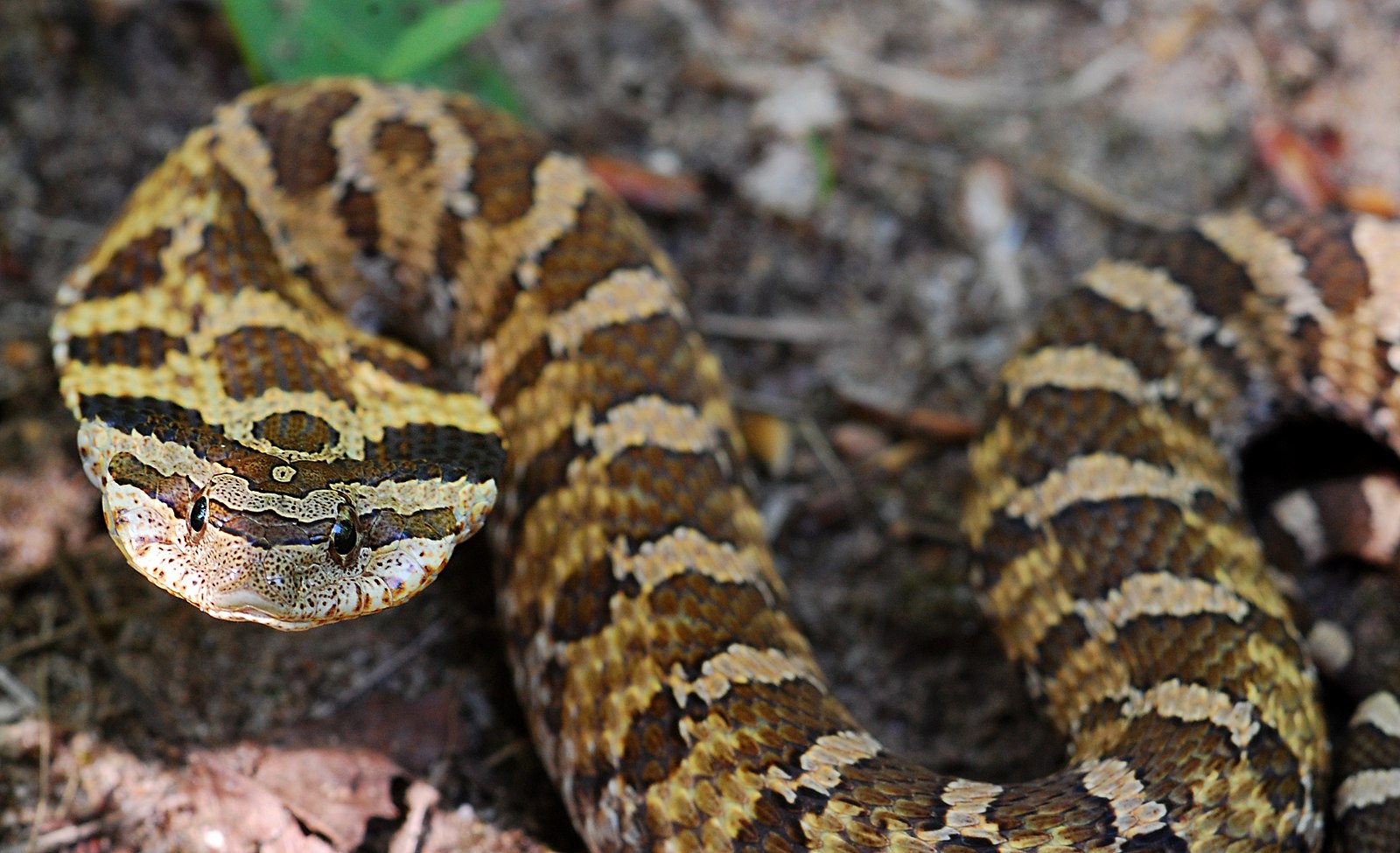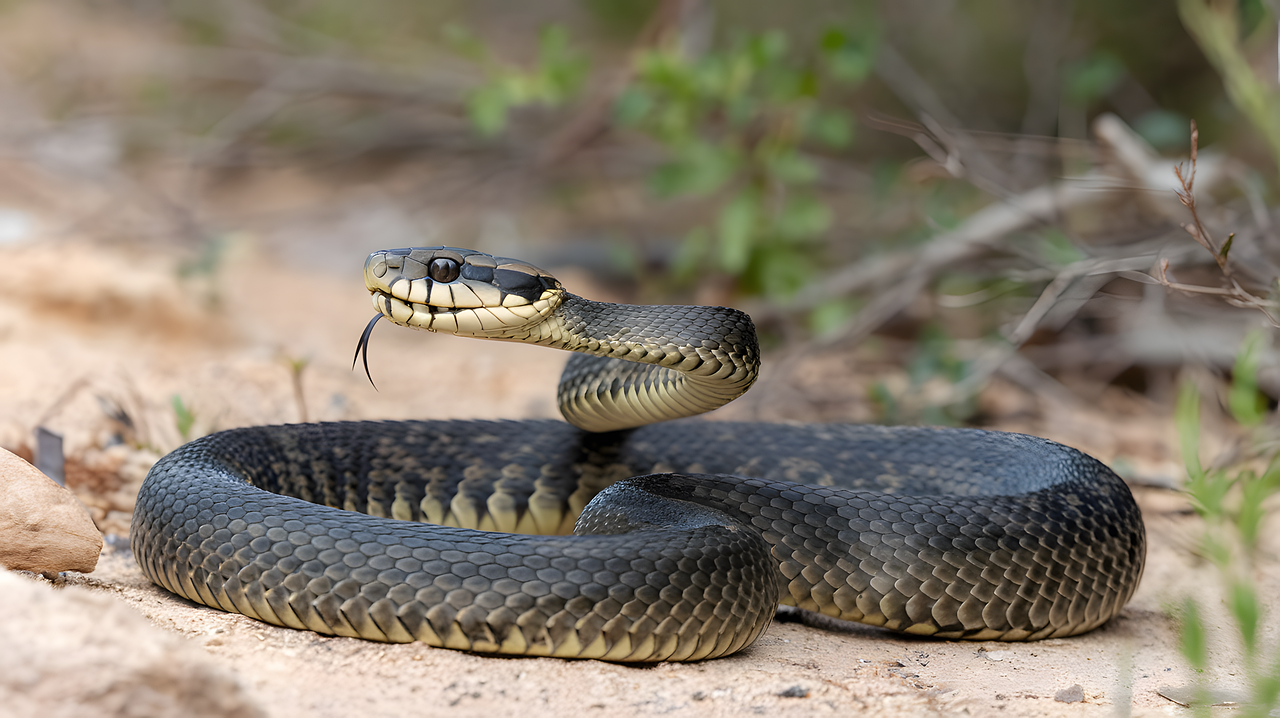In the shadowy undergrowth of forests, across sun-baked deserts, and within the dense vegetation of tropical regions, venomous snakes navigate complex social dynamics that often go unnoticed by human observers.
Far from being simple, solitary predators, these remarkable reptiles engage in intricate interactions with members of their own species and other venomous snakes sharing their habitat. These interactions range from elaborate courtship rituals and territorial displays to communal denning and sophisticated combat behaviors.
By understanding how these potentially deadly creatures communicate and coexist, we gain valuable insights into their ecological roles and evolutionary adaptations that have allowed them to survive for millions of years across diverse environments worldwide.
The Myth of the Solitary Serpent

For decades, venomous snakes were primarily characterized as solitary, asocial creatures that only came together for breeding purposes. This misconception stemmed from limited field observations and the inherent challenges of studying cryptic predators in their natural habitats.
Recent research, however, has revealed that many venomous snake species maintain complex social structures and recognition systems that enable them to navigate their social world effectively.
Studies utilizing radio telemetry and thermal imaging have documented regular interactions between individual snakes outside of breeding seasons, challenging our previous understanding.
For instance, timber rattlesnakes have been observed maintaining long-term relationships with specific individuals and demonstrating preferences for certain social partners over others, suggesting a level of social complexity previously unrecognized.
Chemical Communication: The Silent Conversation

Venomous snakes primarily communicate through chemical signals, creating an invisible landscape of information that humans cannot detect without specialized equipment.
These chemical messages are transmitted through pheromones deposited on the ground or released into the air, creating complex scent trails that can convey information about species, sex, reproductive status, and even individual identity.
When a male cobra detects the pheromones of a receptive female, he can track her movements over considerable distances by flicking his forked tongue, which collects airborne particles and transfers them to the vomeronasal organ in the roof of his mouth for analysis.
This sophisticated chemical communication system allows venomous snakes to locate potential mates, avoid competitors, and establish territories without direct confrontation, reducing the risk of dangerous encounters with other venomous individuals.
Territorial Disputes and Combat Rituals

When venomous snakes of the same species compete for resources or mates, they often engage in ritualized combat that minimizes the risk of serious injury.
Male king cobras, among the world’s most dangerous venomous snakes, engage in spectacular wrestling matches during breeding season, intertwining their bodies and attempting to pin each other’s heads to the ground without using their deadly venom.
Similarly, male rattlesnakes perform “combat dances,” rising up and intertwining their bodies in tests of strength, with the winner gaining breeding rights to females in the vicinity.
These combat rituals are carefully choreographed to prevent either participant from suffering venomous bites, as the death of competitors would ultimately reduce the gene pool and harm the species’ survival prospects. The loser typically retreats without physical injury, preserving the population while establishing a clear dominance hierarchy.
Courtship Behaviors and Reproductive Strategies

Mating interactions between venomous snakes involve elaborate courtship rituals that ensure species recognition and reduce the risk of hybridization. Male eastern diamondback rattlesnakes will approach a receptive female slowly, performing a series of jerking movements and tongue-flicks to signal their intentions before attempting copulation.
Female venomous snakes exercise considerable control over mate selection, often rejecting multiple suitors before accepting a partner, suggesting the operation of female choice in sexual selection.
In some species like bushmasters (Lachesis muta), males may engage in courtship behaviors lasting several days, during which they guard the female from other potential mates.
These prolonged interactions represent a significant investment of time and energy, highlighting the evolutionary importance of reproductive success in these species.
Communal Denning: Winter Survival Strategy

In temperate regions, certain venomous snake species exhibit remarkable social cooperation through communal denning, where dozens or even hundreds of individuals congregate in shared hibernacula to survive harsh winter conditions.
Prairie rattlesnakes in the American Midwest may travel several miles to return to the same communal den year after year, using geochemical cues and celestial navigation to locate these critical survival sites.
Within these dens, snakes coil together in masses to conserve body heat, with larger individuals often positioned in the center while smaller snakes remain near the periphery.
Remarkably, these winter aggregations may include multiple venomous species sharing the same space peacefully, as timber rattlesnakes, copperheads, and cottonmouths have been documented hibernating together in parts of their overlapping ranges.
This seasonal sociality demonstrates that even highly territorial venomous species can modify their behaviors when ecological pressures favor cooperation.
Interspecific Interactions: When Different Venomous Species Meet

When different species of venomous snakes encounter one another in shared habitats, their interactions are typically characterized by mutual avoidance rather than aggression.
King cobras and kraits may occupy the same forests in Southeast Asia but partition their activity patterns temporally, with one species being primarily diurnal while the other hunts nocturnally.
In cases where direct encounters do occur, many venomous snakes possess specialized venom resistance to the toxins of sympatric (co-occurring) venomous species, an evolutionary adaptation resulting from long-term ecological relationships.
This resistance is particularly evident in ophiophagous (snake-eating) species like king cobras and indigo snakes, which have developed physiological immunity to the venom of their prey.
However, this immunity is rarely perfect, and most venomous species will actively avoid confrontations with other venomous snakes when possible, highlighting the high costs associated with aggressive interactions.
Maternal Behavior and Offspring Protection

Contrary to the popular belief that reptiles show no parental care, several venomous snake species exhibit protective maternal behaviors that influence social development in offspring.
Female southern copperheads remain with their litters for several days after birth, guarding the vulnerable neonates from predators and potentially cannibalistic adult snakes of the same species.
King cobras take maternal care even further, with females constructing elaborate nests from vegetation and guarding their eggs for the entire 60-90 day incubation period, aggressively defending the nest site from all intruders.
These behaviors create the young snakes’ first social experiences and may play a crucial role in the development of appropriate species-specific interaction patterns.
Research suggests that juvenile venomous snakes separated from their mothers or clutch-mates too early may develop abnormal social behaviors, indicating that early social experiences shape adult interaction patterns.
Cannibalism and Predation Among Venomous Species

Intraspecific predation (cannibalism) and interspecific predation between venomous snakes represent important ecological interactions that shape population dynamics and behavior.
King cobras are specialized snake-eaters that regularly prey on other venomous species, including kraits, vipers, and even smaller cobras, using their superior size and venom resistance to overcome these dangerous meals.
In resource-limited environments, larger individuals of species like fer-de-lance vipers may occasionally cannibalize smaller conspecifics, particularly during seasonal food shortages.
These predatory pressures have driven the evolution of specialized avoidance behaviors in potential prey species, such as the distinctive defensive postures of many small elapids when confronted by larger ophiophagous snakes.
The threat of predation also influences habitat selection and activity patterns, with smaller venomous species often adopting more cryptic behaviors in areas where they coexist with snake-eating species.
Competition for Resources Among Venomous Snakes

When multiple venomous snake species occupy the same ecosystem, they typically reduce direct competition through resource partitioning and niche specialization.
In the Arizona desert, Mojave rattlesnakes, tiger rattlesnakes, and sidewinders coexist by specializing in different prey items, hunting during different time periods, or utilizing specific microhabitats within the shared landscape.
Even closely related species, like the eastern diamondback and timber rattlesnake in the southeastern United States, minimize competition by focusing on different prey bases, with the former preferring rabbits and rodents in open areas while the latter hunts smaller mammals in forested habitats.
Competitive interactions generally escalate only during resource scarcity, such as extended droughts when prey becomes limited and water sources concentrate multiple species in close proximity.
Under these stressful conditions, larger or more aggressive species may temporarily displace subordinate ones from prime hunting or basking locations.
Cooperative Hunting and Feeding Behaviors

Although rare among venomous snakes, there are documented cases of coordinated hunting behaviors that suggest a degree of cooperation between individuals.
Cuban boas have been observed positioning themselves strategically at cave entrances to capture bats, with multiple snakes seemingly coordinating their hunting positions to maximize capture efficiency.
Similarly, some pit vipers will aggregate in areas with high rodent activity, potentially increasing their collective hunting success through what researchers term “inadvertent cooperation.”
During feeding, venomous snakes generally maintain individual spacing to reduce the risk of accidental bites or competition over prey items.
However, in captive settings, some species have been observed practicing “communal feeding,” where multiple individuals feed on larger prey items simultaneously without aggression, suggesting that under certain conditions, the benefits of resource sharing may outweigh competitive impulses.
Learning and Social Cognition in Venomous Snakes

Growing evidence suggests that venomous snakes possess more sophisticated learning abilities and social cognition than previously recognized, which influence their interactions with conspecifics.
Timber rattlesnakes can learn to recognize individual snakes they have previously encountered, altering their behavior based on past experiences with specific individuals.
Captive studies with elapids have demonstrated observational learning, where naive individuals acquire new behaviors by watching experienced conspecifics perform tasks like navigating novel environments or accessing food resources.
These cognitive abilities likely play important roles in the wild, allowing venomous snakes to remember territorial boundaries, recognize potential mates or rivals, and avoid dangerous individuals of their own or other species.
The capacity for social learning may be particularly important for juvenile snakes, which must quickly acquire the skills needed to navigate complex social and ecological landscapes.
Human Impacts on Venomous Snake Social Behaviors

Anthropogenic influences are increasingly disrupting the natural social dynamics of venomous snake populations worldwide. Habitat fragmentation isolates previously connected populations, reducing genetic diversity and disrupting traditional migration corridors to communal denning sites that may have been used for centuries.
Climate change is altering hibernation patterns and breeding seasonality, potentially creating mismatches between male and female reproductive cycles that compromise successful mating.
Collection for the exotic pet trade and traditional medicine disproportionately removes larger individuals from wild populations, skewing sex ratios and age structures in ways that fundamentally alter social interactions.
Conservation strategies are now beginning to incorporate knowledge of social behaviors into management plans, recognizing that protecting not just individuals but entire social systems is crucial for maintaining viable populations of these ecologically important predators.
Evolutionary Significance of Social Interactions

The complex social behaviors observed in venomous snakes reflect millions of years of evolutionary pressures that have shaped communication systems, recognition abilities, and interaction patterns.
The ritualized combat seen in vipers likely evolved to reduce the risk of serious injury during competition for mates, as venomous species face a unique evolutionary dilemma where their primary defense mechanism could easily kill valuable conspecifics.
Chemical communication systems have been refined to convey increasingly specific information, allowing for individual recognition in species that maintain long-term social relationships or territorial boundaries.
The balance between competition and cooperation seen in communal denning behaviors demonstrates how natural selection has favored flexible social strategies that can adapt to changing environmental conditions.
Understanding these evolutionary adaptations provides valuable insights into how dangerous predators can coexist and even cooperate, offering broader lessons about the development of social systems across diverse taxonomic groups.
The social lives of venomous snakes reveal a surprising complexity that challenges our preconceptions about these often-feared reptiles. From chemical communication and ritualized combat to communal denning and maternal care, these animals engage in sophisticated interactions that reflect millions of years of evolutionary refinement.
As research techniques improve, allowing scientists to observe and document behaviors that once remained hidden, our understanding of venomous snake sociality continues to expand.
This knowledge not only enhances our appreciation for these remarkable creatures but also provides crucial insights for conservation efforts and human safety in regions where venomous snakes are common.
By recognizing that these animals are not simply solitary killers but participants in intricate social networks, we gain a more complete understanding of their ecological roles and the evolutionary forces that have shaped their behaviors throughout their long evolutionary history.




